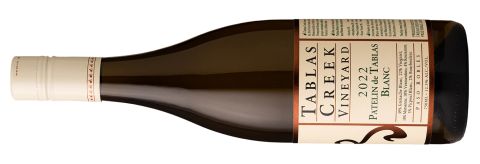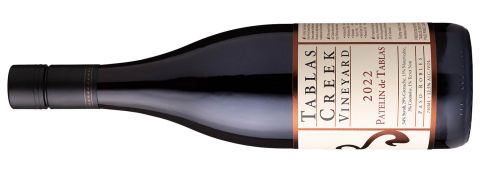On this site, ‘Tablas Creek’ makes an appearance in no fewer than 42 articles. Jancis’s first tasting note for this Paso Robles-based winery is dated October 2008. Their commitment to sustainability (and their status as the first ever Regenerative Organic Certified vineyard) made them the subject of two entries in our 2022 writing competition (authored by Anna Spooner and Robin Renken). The quality of their farming and their winemaking is hardly breaking news. But what is not as widely acknowledged is just what good value their entry-tier wines are.
On my trip to Paso Robles last September, I tasted 152 wines from 44 producers in four days. The best-value wines, bar none, were Tablas Creek’s 2022 Patelin de Tablas wines. Both the white and the red were affordable, inarguably delicious, balanced and refreshing, and either could have aged for a further five years. I will note, these wines are quite a different style than the dense, chewy, high-alcohol wines the region is best known for – the white clocked in at 12.5% alcohol and the red at 13%. If I were forced to drink just one, I would choose the white, but I thoroughly recommend both.
The first vintage from Tablas Creek was 1997. As a partnership between the Perrin family of Château de Beaucastel and the Haas family of Vineyard Brands, Beaucastel’s US importer. Tablas Creek had two distinct advantages from the get-go: a historically respected name and a distributor with wide reach. Alongside a well-suited estate and a talented team, it comes as no surprise that the brand has thrived. But it has not always been a smooth road.
In 2009, Tablas Creek hit a speed bump that is responsible for the creation of this week’s wine of the week: frost and drought so extreme that it cut the vintage in half. At the time, they made wine only from their own grapes, so they had no recourse – they could make wine only from what little they managed to grow. But not being able to meet the demand from distributors when those partners have done an excellent job creating demand for you is tough on relationships.
However, as this happened on the heels of the 2008 financial crisis, there was fruit on the market from neighbouring high-profile growers. In 2010, Tablas Creek decided to launch a new label, Patelin de Tablas, which would be made up of both estate-grown and purchased fruit, the percentages waxing and waning depending on the bounty of the vintage. This sated the need for more wine, formed community ties with neighbouring properties, and didn’t compromise the reputation of the original estate wines. (Jason Haas tells the story far more compellingly than I could on the Tablas Creek blog.)
Now with the 12th vintage on the market, the Patelin wines are a thriving success (so much so that last autumn Tablas launched Lignée de Tablas, a line of single-vineyard wines made from fruit purchased from vineyards planted with Tablas Creek clones). It is a testament to the talent of the winemaking teams that the 2022 Patelin wines, coming from a vintage with punishing heatwaves and the third consecutive year of drought, are so good.
The Patelin Blanc 2022 is a blend of Grenache Blanc, Viognier, Marsanne, Vermentino, Roussanne, Picpoul Blanc and Bourboulenc sourced from six Paso Robles sub-AVAs (the specific vineyards are outlined in their production notes). There is no oak influence; rather, all the fruit was separately whole-cluster pressed and fermented in stainless-steel tanks using ambient yeasts. The varieties were then blended and held in stainless steel until bottling, yielding a fresh, zippy wine so tightly wound with lemon, lime and a hint of petrol that it feels a bit like Hunter Valley Semillon – though without such bracing acidity!
If you’d prefer a red, the Patelin Rouge 2022 is a worthy counterpart to the white. Syrah, Grenache, Mourvèdre, Counoise and Terret Noir were fermented separately in upright oak fermenters and stainless-steel tanks with ambient yeasts. The component parts were then blended and aged in 1,500-gallon oak upright tanks until bottling. Given the concentrated vintage, the resulting wine is surprisingly delicate, floral and savoury.
These wines are available from The Wine Society in the UK and from numerous stockists in the US. US readers should note that when vintages are first released, these wines are available in bag-in-box by direct order – just drink BiBs within six months of purchasing to be assured of freshness.
There are many more enthusiastically recommended wines from Tablas Creek in our tasting notes database.















